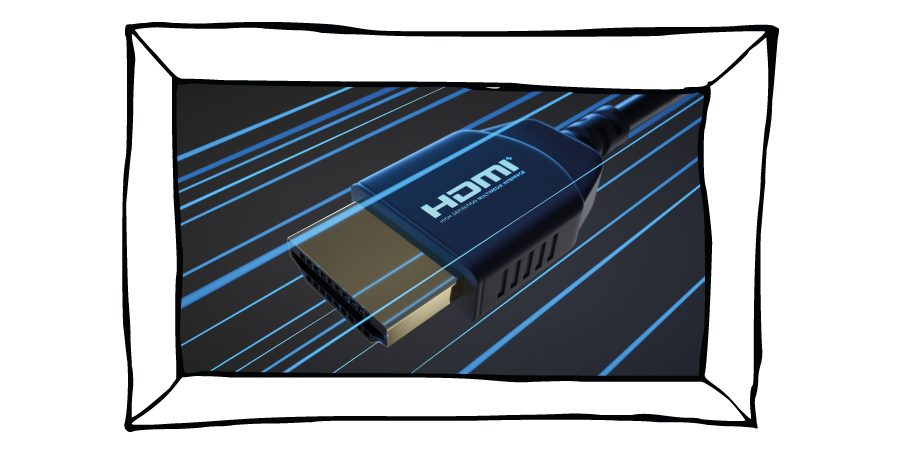Here’s our guide to help you decide which HDMI cable is best for you

HDMI cables are by far the most widely used cables for contemporary audio-visual equipment today. Happily, most aren’t expensive, apart from a new generation that are currently only really being used at present by professional gamers (the new HDMI 2.1 standard).
Here’s our guide to which HDMI cable is best for your needs.
A quick overview of the HDMI market
HDMI is essentially an evolving standard developed by a group of technology firms known as HDMI.org, who between them are advancing high-resolution audio-visual (AV) equipment. As the technology is refined and improved, so the HDMI standard is upgraded.
The different versions of HDMI on the market today refer to the hardware (the TV sets, games consoles, set-top boxes and PCs), rather than the cables. This means that if you aren’t a professional gamer or haven’t yet invested in the most advanced 4K-resolution TV screens, most HDMI cables, including the older ones, will work with newer hardware. However, the higher up the hardware tree you climb, the greater the bandwidth you’ll need to get the best results.
Types of HDMI cable
We can group HDMI cables into five types:
Standard: Used in home theatre applications and compatible with both LED and LCD screens, Standard HDMI cables enable the transmission of 720p or 1080i video and good-quality surround sound from HDMI-compliant audio devices.
Standard with Ethernet: The same as the Standard HDMI, but with a dedicated Ethernet cable included to allow internet connections between devices (vital for streaming video or other internet content).
Standard Automotive: Identical connectivity as the Standard HDMI cable, but with a more robust outer insulation to protect against motion-induced wear and tear.
High Speed: These are the cables you’ll need if you want to get the best out of higher-end Ultra High Definition ‘4K’ screens. One shortcoming, though, is that their ability to deliver fast, high-quality digital signals deteriorates with distance. Hence, they tend to be rather short cables.
High Speed with Internet: Identical to High Speed HDMI but with a dedicated Ethernet cable.
Which type do you need?
If you’re in doubt about what cable you need because, say, you’ve bought a more sophisticated piece of AV equipment, to be really sure what type is best for your particular device, check the device’s manual. This is, as we noted earlier, especially important if you’re into high-end gaming. The power of these consoles and video displays may require a cable that’s capable of supporting the most advanced HDMI standard yet, HDMI 2.1, which requires much faster data transfer speeds than its predecessors to deliver the spectacular visual results you’re seeking.
Older ‘Standard’ cables, for instance, have a maximum hertz rate (designating the number of times per second that the equipment’s screen can refresh) of 30Hz, but the more advanced gaming displays refresh themselves 120 times per second, or 120Hz. A 30Hz cable will lead to lags and ‘sticking’.
The chances are that the equipment you have and the HDMI cables you need for them are operating to the HDMI 2.0 standard, which was introduced in 2013 and is now by far the most commonly used cable in use today. It supports a refresh rate of 60Hz.
If you want to cut down on the number of cables you use, look for an HDMI cable with an audio return channel (ARC), which permits audio to be sent back to a sound bar (most modern TVs are ARC-enabled).

